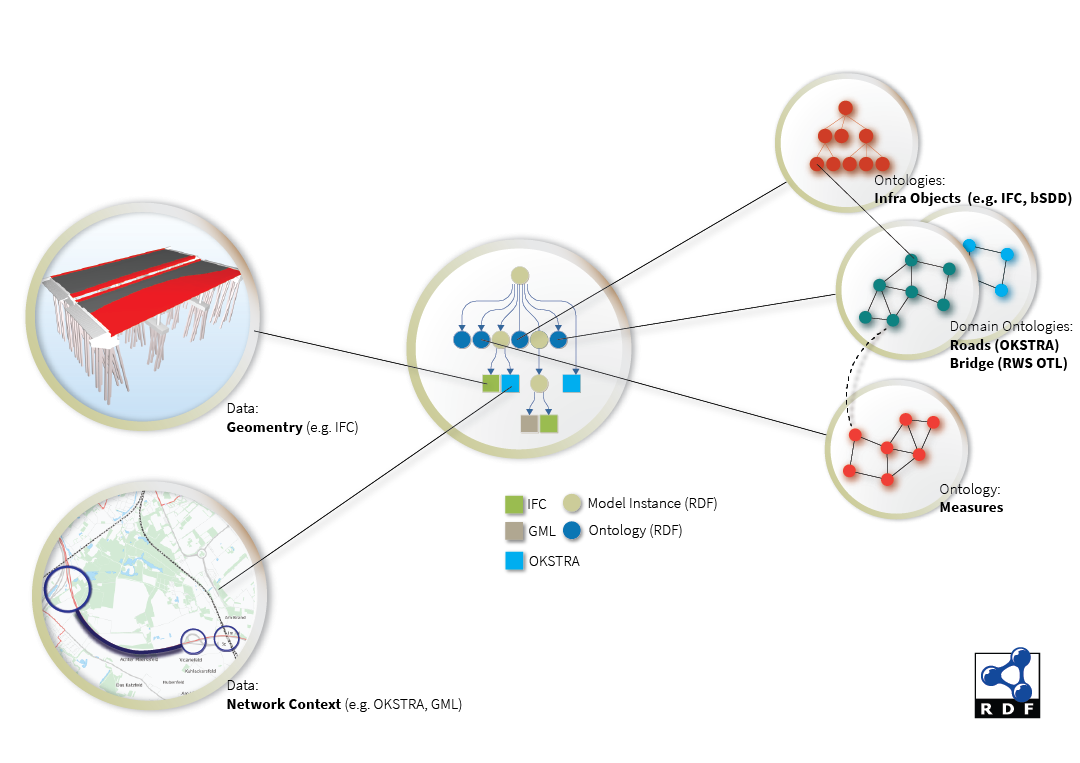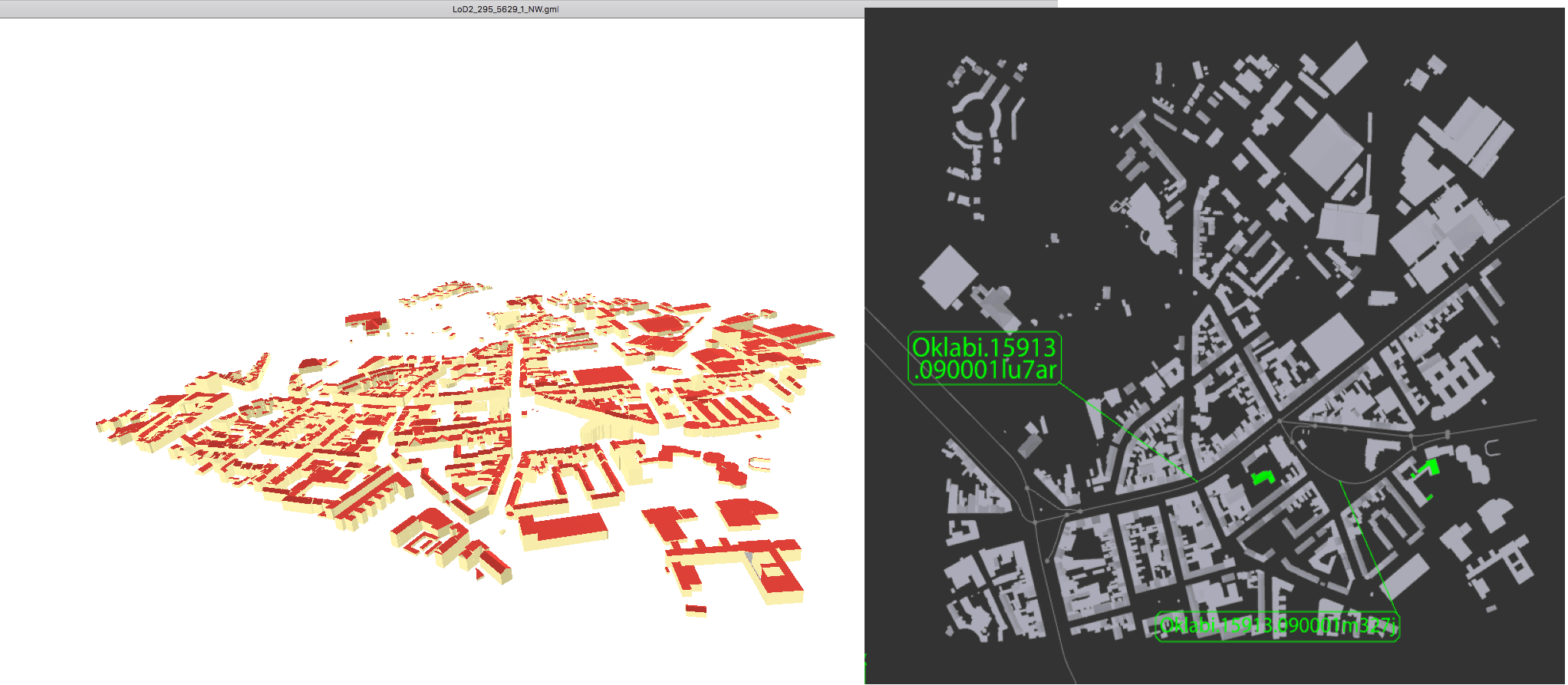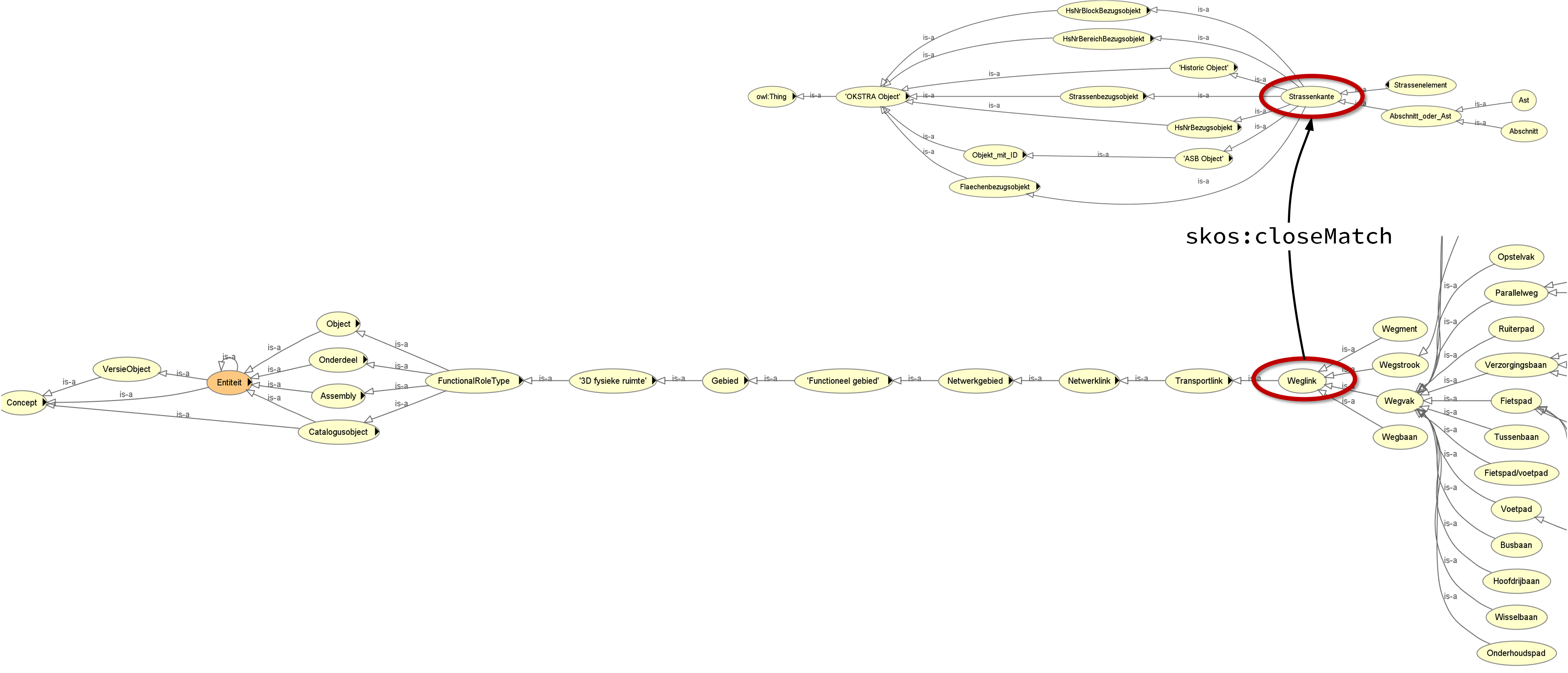
okstraOWL
Förderer
Bundesanstalt für Straßenwesen (BASt)
Laufzeit
2016- 2018
Projektbeschreibung
Zielsetzung
In diesem Projekt wurden methodische Ansätze und Prototypen zur Verknüpfung des Objektkatalog für das Straßen- und Verkehrswesen (OKSTRA) mit anderen Informationsmodellen auf Basis der Technologien „Linked Data“ und „Semantic Web“ erarbeitet und anhand beispielhafter Datensätze auf ihre Praxistauglichkeit hin überprüft.
In diesem Zusammenhang wurde die Einbeziehung und Kontextualisierung ähnlicher und ergänzender Informationsmodelle im europäischen und internationalen Raum in verschiedenen Anwendungsfällen untersucht sowie das Entwicklungspotential wechselseitiger Anbindungen kritisch ausgelotet.
Im Zuge des Projekts wurde dabei überprüft, inwiefern der OKSTRA eine mögliche Rolle als zukünftiges Grundmodell eines gesamteuropäischen Modells einnehmen kann. Zunächst auf binationale (DE/NL) Beispiele beschränkt, wurde im Projekt eine technische Machbarkeitsstudie grenzüberschreitender Analysen von Straßeninformationen erarbeitet, die die Möglichkeiten und Einschränkungen der Verwendung von Linked-Data-Technologien demonstriert. Erkenntnisse und Ergebnisse wurden darüber hinaus auch auf ihre mögliche Bedeutung für den föderalen bzw. länderübergreifenden Einsatz begutachtet, die eine Vernetzung der verschiedenen nationalen Systeme zulässt.
Konzept
Im Kern des Untersuchungskonzepts stand die Überführung des bislang in UML modellierten und auf XML- Schema abgebildeten Datenmodells OKSTRA in die Web Ontology Language (OWL). Für die Überführung gibt es unterschiedliche Herangehensweisen, deren jeweiligen Vor- und Nachteile dokumentiert wurden, bevor eine Abbildung ausgewählt und umgesetzt wurde. Auf der Basis des resultierenden Datenmodells okstraOWL wurden anschließend Verfahren des Linked Data angewandt, um beispielhaft die niederländische Objektbibliothek CB-NL mit dem OKSTRA zu verbinden. Diese Verknüpfung wurde auf Instanzebene mithilfe von realen Datensätzen erprobt und der Gesamtansatz anhand der Formulier- und Verarbeitbarkeit von modellübergreifenden Anfragen evaluiert.
Im Einzelnen ergaben sich folgende Arbeitspakete bzw. -schritte:
- Erfassung des Stands der Wissenschaft zu Linked Data, mit Fokus auf die Bereiche Geoinformatik und Building Information Modeling (BIM)
- Analyse der Architektur der Ontologie, der Semantik und des Inhalts von OKSTRA und CB-NL
- Erarbeitung von Grundsätzen zur Modellierung für eine Übertragung des OKSTRA in OWL
- Übersetzung des OKSTRA in OWL: Generierung von okstraOWL
- Vergleich und Harmonisierung der Definition der Objekte in okstraOWL und CB-NL
- Aufbereitung und Anreichung von Datenbeständen der niederländischen Straßenbaubehörde Rijkswaterstaat (RWS) mit OKSTRA-Inhalten
- Erarbeitung weiterführender Modellverwendungen
- Prototypische Implementierung einer gemeinsamen Datenmodellierung und Repräsentation von okstraOWL-Objekten



Forschende
Publikationen
2018
Benefits and Limitations of Linked Data Approaches for Road Modeling and Data Exchange Proceedings Article
In: Advanced Computing Strategies for Engineering : 25th EG-ICE International Workshop 2018, Lausanne, Switzerland, June 10-13, 2018, Proceedings, Part II / edited by Ian F. C. Smith, Bernd Domer, S. 245-261, Workshop of the European Group for Intelligent Computing in Engineering, Lausanne (Switzerland), 10 Jun 2018 - 13 Jun 2018 Springer International Publishing, Cham, 2018, (Weitere Reihe: Springer eBook Collection : Computer Science).
